13th International Conference on Studies, Repairs and Maintenance of Heritage Architecture
New Forest, UK
Overview
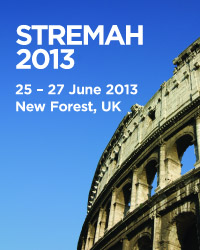
The 13th International Conference on Studies, Repairs and Maintenance of Heritage Architecture took place in the New Forest, home of the Wessex Institute of Technology, the organisers of the meeting.
The conference started in Florence in 1989 and since then it has been held in a series of outstanding locations, such as Seville (1991); Bath (1993); Crete (1995); San Sebastian (1997); Dresden (1999); Bologna (2001); Halkidiki (2003); Malta (2005); Prague (2007); Tallinn (2009) and Siena (2011).
The meeting addressed a wide range of topics related to the historical aspects and the re-use of heritage buildings, as well as technical issues on the structural integrity of different types of building, such as those constructed with materials as varied as iron and steel, concrete, masonry, wood or earth. Restoration processes require the appropriate characterisation of those materials, the modes of construction and the structural behaviour of the building. This knowledge can be gained through a series of material characterisation techniques, preferably via non-destructive tests. Modern computer simulation can provide accurate results demonstrating the stress state of the building and possible failure mechanisms affecting its stability.
The importance of retaining the built cultural heritage cannot be overstated. Rapid developments and inappropriate conservation techniques are threatening many unique sites in different parts of the world. This conference aims to provide the necessary scientific knowledge required to formulate regulatory policies to ensure effective ways of preserving the architectural heritage. Because of that the STREMAH series has been successful and continues a wide range of high quality papers since its beginning in 1989.
The conference attracted contributions from scientists, architects, engineers and restoration experts from all over the world, dealing with different aspects of heritage buildings.
Prof Carlos A Brebbia, Chair of the meeting and Director of Wessex Institute of Technology (WIT) opened the proceedings by pointing out the importance of the conference series for the work of the Institute. The function of WIT – Carlos said – is to act as medium for knowledge transfer.
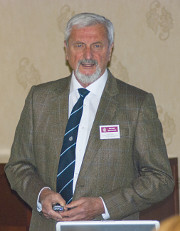
The research originating in WIT – Carlos explained – has produced important tools for engineering analysis. The Institute is renowned for the development of the boundary element method, a technique now widely used in engineering analysis, particularly in the energy and aerospace industries. Software codes developed at Ashurst Lodge are now widely applied in engineering practice, which represents the best validation of the importance of WIT research.
Carlos ended his introductory remarks by thanking the delegates for coming to the New Forest for STREMAH/13.
Keynote Speaker
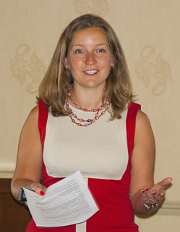
She has been Head of Advocacy for English Nature, using her expertise to advise Government on engaging with local and regional partnerships. She has also worked for the Royal Society for the Protection of Birds in Scotland.
Alison is Commissioner for the Mayor of London’s Sustainable Development Commission and has been appointed to the Regional Advisory Committee of the Forestry Commission.
Alison was educated in Oxford University on biological sciences, followed by a conservation degree at UCL (University College London).
The main objective of her work is the conservation of the New Forest Heritage. She is in charge of giving specialist advice, trying to conserve the heritage landscape. An important objective is work with the local community in meeting and developing special heritage and skills.
Alison’s work supports countryside initiatives and archaeology, including preparing fact sheets for schools. Another important area is to focus on the New Forest Architectural heritage, traditional building skills. A new initiative is the launching of a website showing the cultural heritage of the Forest.
Alison’s talk was very well received and followed by questions from delegates from different countries who were interested in knowing more about the management of the New Forest.
Conference Topics
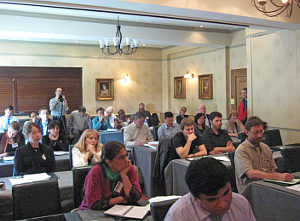
The conference covered a series of topics:
- Heritage architecture and historical aspects
- Assessment and re-use
- Performance and maintenance
- Simulation and modelling
- Modern (19th/20th century) heritage
- Seismic vulnerability
- Material characterisation
- Heritage masonry
- Earth construction
- Wooden structures
- Guidelines, codes and regulations for heritage
- Defence heritage
Invited Presentations
The programme included a few invited presentations by well-known colleagues:
- ‘Assessment of historic concrete structures’ by R Brueckner and P Lambert, Mott MacDonald, UK
- ‘Reliability assessment of heritage architecture’ by M Holicky and M Sykora, Czech Technical University in Prague, Czech Republic
- ‘Structural design, typical damages and reinstatement of the Malakoff Towers’ by S Niederhagemann, Deutsches Bergbau-Museum, Germany
- ‘Numerical investigation of the influence of earthquake forces and foundation settlement on the performance of Post-Byzantine churches’ by G C Manos, Aristotle University of Thessaloniki, Greece
- ‘Mechanical, hygric and thermal properties of building stones’ by R Cerny, Czech Technical University in Prague, Czech Republic
Social Occasions
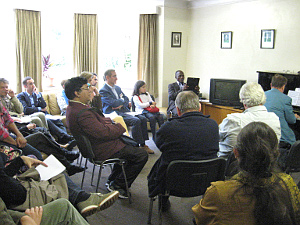
A visit to Lymington was arranged during the first lunch break, during which the delegates were offered a packed lunch.
Lymington is a historical port of the New Forest. It has now negligible trade but it was for many years an important commercial centre.
The most beautiful part of Lymington is its wide main street with numerous Georgian houses on either side. At one end of it is the main church famous for having been used as a stable for Cromwell’s horses during the Civil War. At the other end of the High Street is a lane descending to the port called Quay Hill, with beautiful cottages, many of which are now restaurants and shops.
The town was created in 1184 by sub-dividing the land into medieval type allotments, which is still discernible in the narrow frontages of many High Street shops.
Lymington became famous for its market – still held every Saturday. From the 12th century on, it was an important centre for the manufacturing of salt. Seawater was converted into brine in shallow pools, or ‘salterns’, and the brine was then boiled inside large barns to provide salt. The industry lasted until the early 19th century when salt mines were discovered elsewhere and the old salterns became disused.
The delegates enjoyed this visit to Lymington, a very popular tourist sight as well as a thriving town with a well know marina.
During one of the lunch breaks the delegates were invited to visit the Wessex Institute campus where they were offered a lamb BBQ. The occasion provided a friendly environment in which the delegates could interact with each other and meet some of the Institute staff. At the end of the meal they were offered a piano recital by Pier Paolo Strona, an Adjunct Professor of the Institute, who is an outstanding concert pianist. The material consisted of pieces by Bach, Ginastera, Gurdieff and Satie, ending with the Military Polonaise of Chopin. On the way out Carlos offered them a CD recorded by Pier Paolo which contained pieces in harmony with the New Forest environment.
Conference Dinners
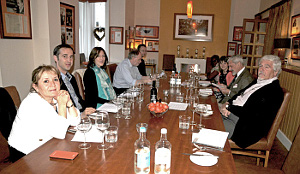
The conference banquet took place in Rhinefield House, one of the most impressive buildings in the New Forest. The House, now a luxury hotel, was the residence of a rich couple from the Nottingham area, whose family fortune was based on coal mining. They demolished the original Lodge at the end of the 19th century to build a large house resembling a Scottish castle from the outside, while the rooms inside follow different styles.
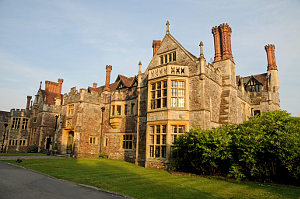
The delegates then had an excellent dinner, accompanied by good wines enjoying each others company. Carlos explained the history of the house and the family who built it, commenting on the ups and downs of the property until it became a luxurious hotel as it is today.
Closing of the Conference
The conference was closed with a few words by Carlos explaining the importance of these meetings and in particular the fact that papers presented at WIT conferences are not lost to the community but permanently stored online as well as distributed throughout the world.
Conference Proceedings
The proceedings of STREMAH 2013 - Structural Studies, Repairs and Maintenance of Heritage Architecture XIII, 616pp (Print ISBN: 978-1-84564-730-8; eISBN: 978-1-84564-731-5) are available from WIT Press. Orders can be placed on the WIT Press web site at www.witpress.com or by email:
Papers from the conference will also be hosted online at the WIT eLibrary as Volume 131 of WIT Transactions on the Built Environment (ISSN: 1746-4498, Digital ISSN 1743-3509). For more details visit the WIT eLibrary at http://library.witpress.com


 Wessex Institute
Wessex Institute